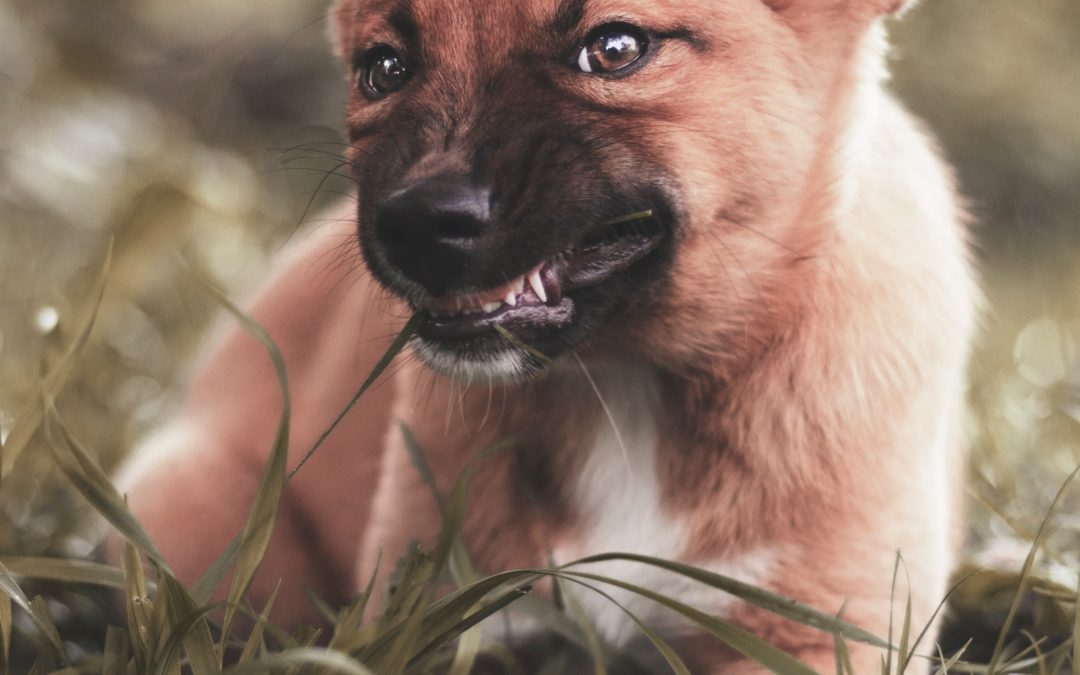We at Pet Parents Place always enjoy guest blogs. Below is another great guest post and this one is fro Lindsey Harper, co-founder of the pet blog Avid Pup
If you have a guest blog you’d like to submit, please send it to us at:
Puppy Aggression: Recognizing The Signs and How To Deal With It
We’ve all heard about – or even felt – the sharp teeth of a puppy. While learning between right and wrong, these young ones will experiment, using their mouths to do it. But many don’t know that their puppy is capable of showing aggression. When exactly does a playful nip turn into a nasty bite? And why would a puppy feel the need to be aggressive in the first place? To understand and prevent this from happening, you must identify the problem.
Why Would my Puppy Be Aggressive?
In the animal kingdom, there are plenty of reasons as to why an animal will become aggressive or reactive. The following reasons explain the different types of aggression that might develop in your puppy.
Dominant Dog
From a young age, dogs try to find out who is the bigger, badder wolf. Aggression often emerges in dogs that are trying to claim status within their home or territory.
Sibling Drama
Squabbles between puppies is not uncommon, but it can lead to more than just a play session. A pup that is possessive over toys, food, or even their owner can display signs of aggression.
Fear-driven Aggression
This is one of the most common forms of aggression. When a dog becomes cornered and does not know what to do, they have to defend themselves to snarling, growling, and eventually biting.
Excitement Aggression
Although this seems silly, dogs can get too excited and turn the play session into an aggressive mob. Certain dogs are more susceptible to higher energy levels, becoming reactive when provoked by a bubbly pup.
What Are The Signs Your Puppy Is Being Aggressive?
Now that you know what kinds of aggression are possible, you can learn about many of the “red flags” that become present. Aggression does not happen overnight. Dogs rely on body language to communicate. You can actually use this to your advantage, pinpointing reactivity before it gets too dangerous. Below are some of the precursors to an aggressive puppy.
- Tenseness in the body, or freezing
- Turning away and avoiding either you or the other dogs
- Lifting of the lips to show teeth.
- Growling
- Barking in quick, anxious tones
- Snapping and lunging
- Tail that is stiff and either hanging or arched over the back
- “Hackles”, or the rising of fur along the spine
- Ears pinned flat down against the head
- Mouthing that continues well into physical handling
- Extreme anxiety when separated from the owner
- Frequent urination and defecation in the crate
How Can I Prevent My Puppy From Being Aggressive?
When you see a puppy start to show signs linked to aggression, you want to work on preventing it. Be mindful that many choose to combat their dog’s reactivity with negative punishment. This is not necessarily the best choice. For instance, if your puppy growls at another dog, you should avoid reprimanding them. They are simply communicating that they are uncomfortable. A dog that has been taught not to growl will instead go straight to biting, which is more dangerous. There are ways to prevent your puppy from becoming aggressive with training, two of which are mentioned below.
Socialization
This is one of the best ways to set your puppy up for success. A dog that is introduced to a lot of strangers and other dogs from a young age is less likely to feel threatened when taken to a dog park later in life. Dogs that become aggressive usually do it out of fear. By socializing your puppy, you are helping them to feel comfortable around other pets.
Obedience Training
This type of training is ideal for nipping dominance-based aggression. The reason for this is because of the parameters that it sets. Dogs that become unruly and aggressive because of dominance simply want to be the top dog. By taking your puppy to obedience class, you are teaching them that they should be well-mannered to others, especially you and your family.
What Happens If I Let it Slide?
One of the worst things you can do for your puppy when they start to show signs of aggression is to let it go. Reactivity and aggression do not go away on their own. A puppy who grows up learning that they can act that way may turn into a dangerous dog. Fortunately, AvidPup, highlights an assortment of tricks that you can pull out of your sleeve when Junior becomes too nippy and starts showing his teeth.
- Training to Stop Biting
- Verbal warnings
- Hand muzzling
- Deterrents
- Time out
- Chew toys
A puppy who starts showing signs of aggression needs to be dealt with in a loving, firm manner to stop them from growing up into an unpleasant walking partner. There are a number of ways to stop your puppy from getting too mouthy. Just remember that teaching your young dog boundaries is a way of setting them up for success. With those puppy teeth, you’ll be glad.
About the Author:
Lindsey Harper has always been a pet lover since she got her first puppy as a kid. She is the co-founder of AvidPup, a pet blog where guides and tips are shared so dog lovers can raise their pups healthy and happy.
Featured Photo
Photo by Daniel Lincoln on Unsplash


Great! this is want I am searching, thank you!!